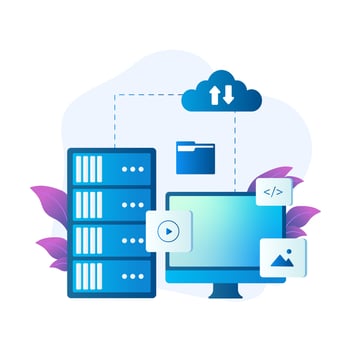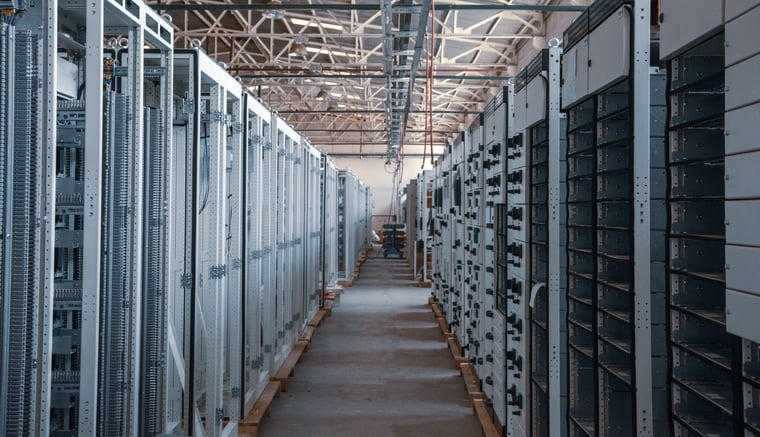Modern file and data management and storage are crucial in maintaining a productive, efficient business workflow. If you want all your files and data stored safely while multiple employees can access them and collaborate with ease, you should consider a file server.
But what is a file server? What are its benefits? And are there other options? Let’s find out.
What Is a File Server?
A file server is a high-powered computer that manages and stores large amounts of data files, such as audio, documents, photos and videos. It acts as a central location so multiple devices and users connected on the same local area network (LAN) or remotely can easily create, access, edit and share them.
This enables users to share information and collaborate without physically transferring files with flash drives or floppy disks. Administrators can create rules as to which users can open, close, add, delete and edit the files. Remote workers especially benefit from file servers, as users can access and save files on the go. Another plus to file servers is that they help with data backups; they can create and maintain backups in one location, so files don’t have to be repeatedly copied on different devices.
File servers need efficient hardware with enough storage space, working memory and processing power to support multiple users sharing, transferring and accessing the data. You should also follow best practices, create a disaster recovery plan and practice air gapping to keep your data safe.
 Two Types of File Servers and the Three Protocols
Two Types of File Servers and the Three Protocols
There are two types of file servers: dedicated and non-dedicated.
- Dedicated file servers offer services to other computers in the LAN or with authorized access. They are designated only as a file server, providing higher storage space and faster data access.
- Non-dedicated file servers are designed for multipurpose uses; they can be used simultaneously as a workstation and for daily tasks. However, these servers are less secure and have less storage space than dedicated ones.
There are also three protocols: server message block (SMB), network file system (NFS) and file transfer protocol (FTP).
- SMB is the most common protocol for LAN file servers. It enables applications to read or write files and allows users to request services from server programs through a LAN. This protocol is compatible with Windows and macOS operating systems.
- NFS is a distributed file system that saves and stores data on particular networks. It allows users to perform different operations, like copying, creating, removing or reading a file. It’s mainly used by Linux and Unix operating systems.
- FTP is mostly for remote access. It sends and receives files between devices.
Benefits and Risks of Using a File Server
Several benefits come with utilizing a file server.
- Makes data accessing and transferring simple
- Easy to customize and configure
- Saves storage space
- Provides flexibility
- Helps connect multiple users
- Secures data
- Enables easy backup and recovery
- Increases collaboration
- Enhances work efficiency
However, some risks come with using a file server.
- File servers can be costly
- They require a qualified IT professional to set up and manage
- File servers are at high risk for cyber attacks
- They can be time-consuming
- They require ample space
 Are There Alternatives to File Servers?
Are There Alternatives to File Servers?
Of course there are! The two most popular alternative options are network-attached storage (NAS) and cloud storage.
NAS is a computer-like device with storage drives that stores and shares files over the network for simultaneous users. Keep in mind that NAS and file servers are mainly used for the same purpose: to store and share files across a network. However, some NAS devices are portable and don’t make as much noise as file servers, and they have fewer, more basic features, which makes them great for small to medium-sized businesses.
Cloud storage is becoming a popular option for businesses. It leverages remote infrastructures and storage services provided by a third party to sync, secure and back up files automatically. Cloud storage is easy to use, cost-effective and scalable, and since it’s through a third party, the company that owns the storage is responsible for its security and maintenance. Examples of cloud storage include Dropbox,OneDrive and Microsoft Teams.
It's never been easier to connect and collaborate than with Microsoft Teams, and Thriveon can help you set it up.
Read: Using Microsoft Teams as a File Server

